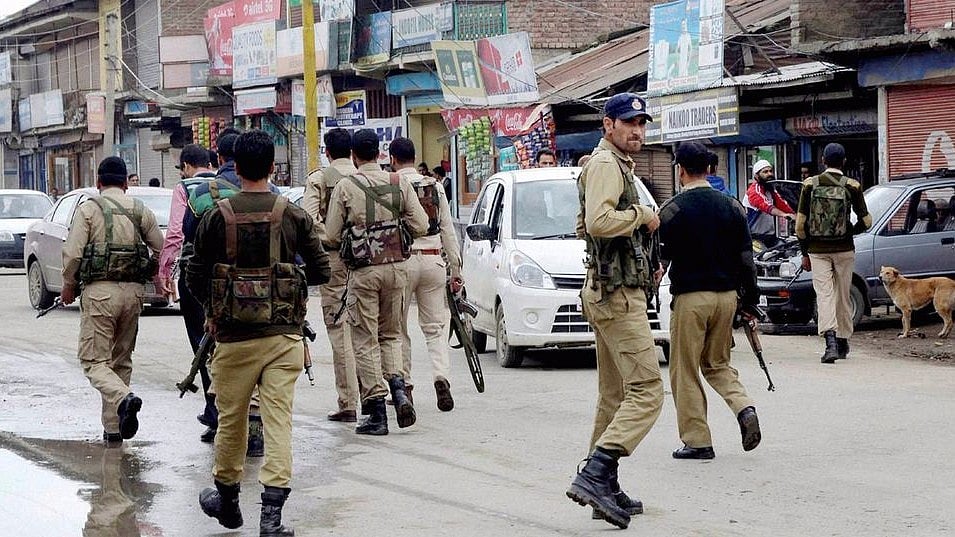Govt Attempting to Pacify, But Retrieving Kashmir Will be Hard
The government, it seems, is approaching stone-pelters not with anyone tied to a jeep but on foot, with open arms.

advertisement
Winston Churchill's observation that America can be depended upon to do the right thing after it has tried all the other alternatives is applicable to most countries.
The government's latest initiative about Kashmir has come at the end of a similar tortuous route; it has tried everything — from a "muscular approach", as the Congress has said, to letting the sword of abrogating Article 35A of the Constitution hang over the state's head.
Like Article 370, which is anathema to the Bharatiya Janata Party (BJP), Article 35A underlines the state's special status by preventing non-locals from buying or owning property in Kashmir.
But now, the government wants to start a dialogue with its critics, although, until recently it appeared that the use of force was its most preferred option.
“Na Gaali Se, Na Goli Se”
It isn’t only that the security forces added pellet guns to their armoury for use against stone-throwers – in addition to, of course, to an occasional recourse to real bullets if the situation warranted.
The forces also edged close to violating the Geneva Convention in the infamous incident when they tied a local person to the bonnet of a jeep as the vehicle traversed trouble-prone areas to deter those who were throwing stones.
Given this atmosphere of virulence, it would have seemed that the government had a one-track approach to the situation in Kashmir, which was to make sure that the restive population was cowed down by a formidable show of force.
Yet, as is known, such a blinkered attitude has rarely led to success in insurgency-prone areas — not least because democracies are invariably at a disadvantage when it comes to the use of unchecked power.
This, thanks to a system of checks and balances which calls for accountability, lest any one section of the government cross a given limit.
In Kashmir, for instance, the Supreme Court has questioned the use of pellet guns, since they pose a danger of not only blinding the demonstrators, but also bystanders.
Furthermore, the government’s opponents have called for the withdrawal of the Armed Forces (Special Powers) Act (AFSPA), considering the leeway that it gives to the security forces, even as its inbuilt safeguards against misuse aren’t always in evidence.
It came as a matter of considerable relief, therefore, when the Prime Minister pointed out, in his Independence Day address to the nation, that the solution to the problem did not lie in abuses or guns but in embracing the Kashmiris. “Na gaali se, na goli se, Kashmir me parivartan hoga gale lagaane se,” he said.
Now, Union Home Minister Rajnath Singh has taken the cue from Narendra Modi by appointing an interlocutor for reaching out to the dissenters.
The government, therefore, can be said to be approaching the stone-pelters not with anyone tied to a jeep but on foot, with open arms.
This is not the first time, of course, that such a conciliatory approach has been tried when belligerent measures have failed. But this is the first gesture of its kind by the Modi government.
The last intervention by a group of interlocutors took place when Manmohan Singh was the Prime Minister.
But its recommendations about reducing the army’s visibility, reviewing the AFSPA, lifting the Disturbed Areas Act and expeditiously probing instances of human rights violations were ignored, as were the suggestions of others like NN Vohra, who was appointed in 2003 to investigate the causes of the continuing unrest. Vohra is now the Governor of Jammu and Kashmir.
Retrieving Kashmir Will be an Enormous Task
It is possible that the change of government because of the departure of Manmohan Singh in 2014 and of Atal Behari Vajpayee in 2004 led to the reports of the earlier teams being mothballed.
Since the present government has at least a year-and-a-half to go, the new man for addressing the longstanding problem – Dineshwar Sharma – will have time on his hands.
But it is not so much a question of time as it is the sincerity of some of the stakeholders – such as the separatists whose loyalty to the government is under a cloud – that can hinder any progress.
Moreover, the differences among them – such as between the hawkish Syed Ali Shah Geelani and the moderate Mirwaiz Umar Farooq – will complicate the task of the official representative.
Thankfully, the government has given Sharma a free hand to choose whom he wants to talk to. But the hyper-nationalists in the Hindutva camp, which include a few television commentators, can queer the pitch for a meaningful dialogue at a time when suspicions are rife.
The prevailing lack of trust between the opposing sides was emphasised by former Finance Minister Yashwant Sinha – now a prominent critic of Modi – when he visited Kashmir along with a delegation of “concerned citizens” and noted the “alienation of the masses of people who have lost faith in us”.
Retrieving Kashmir, therefore, from the “mess” which India has created, according to AS Dulat, a former Indian spy master, will be a gargantuan task.
(Amulya Ganguli is a political analyst. The views expressed are personal. He can be reached at amulyaganguli@gmail.com)
(This article was published in an arrangement with IANS)
(At The Quint, we question everything. Play an active role in shaping our journalism by becoming a member today.)